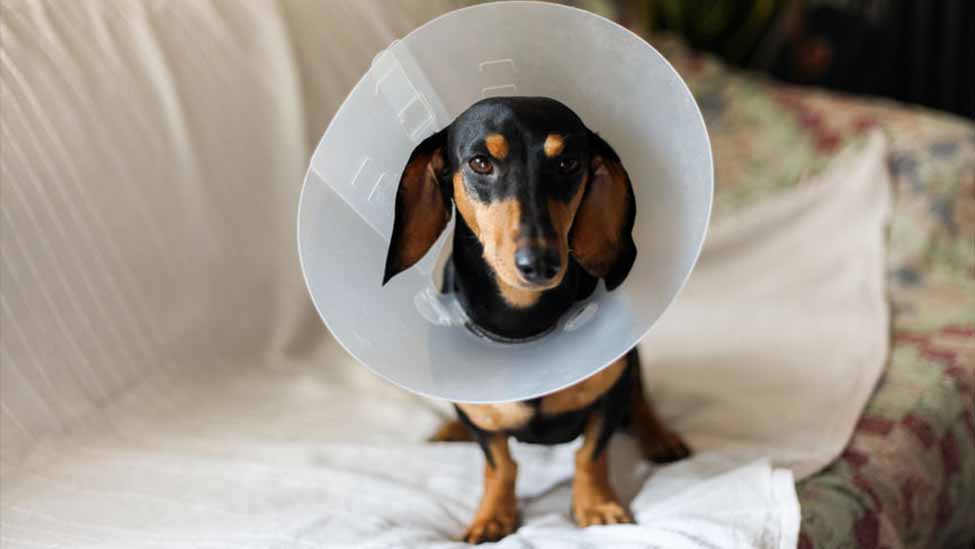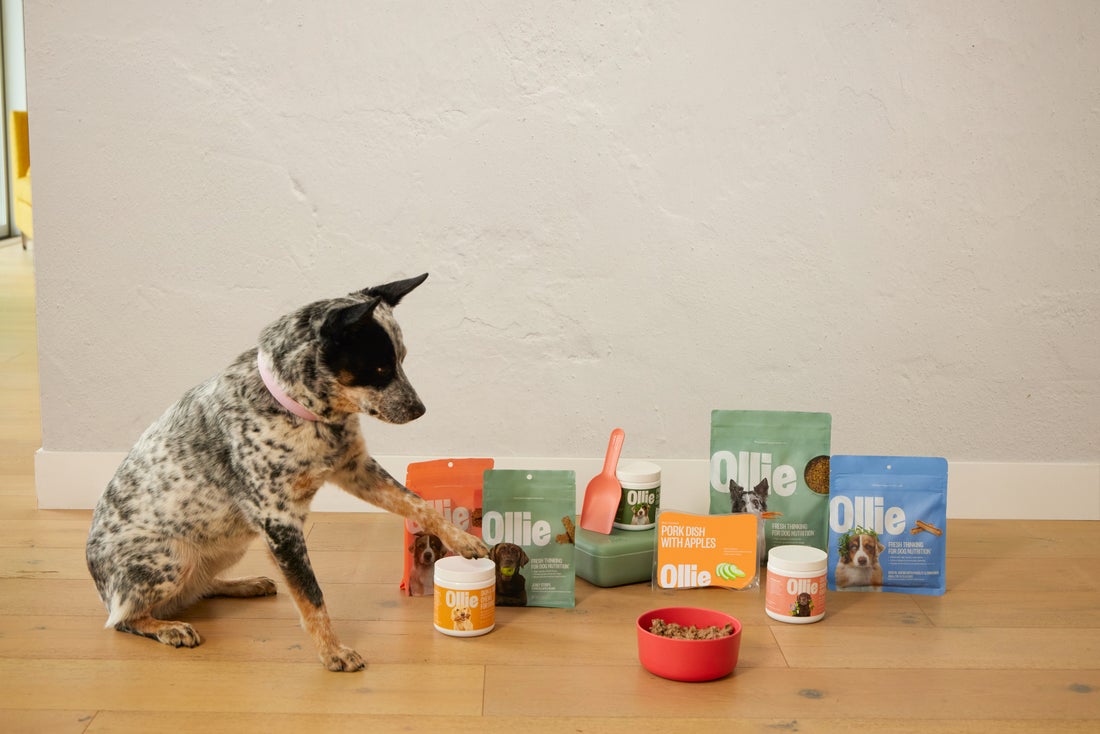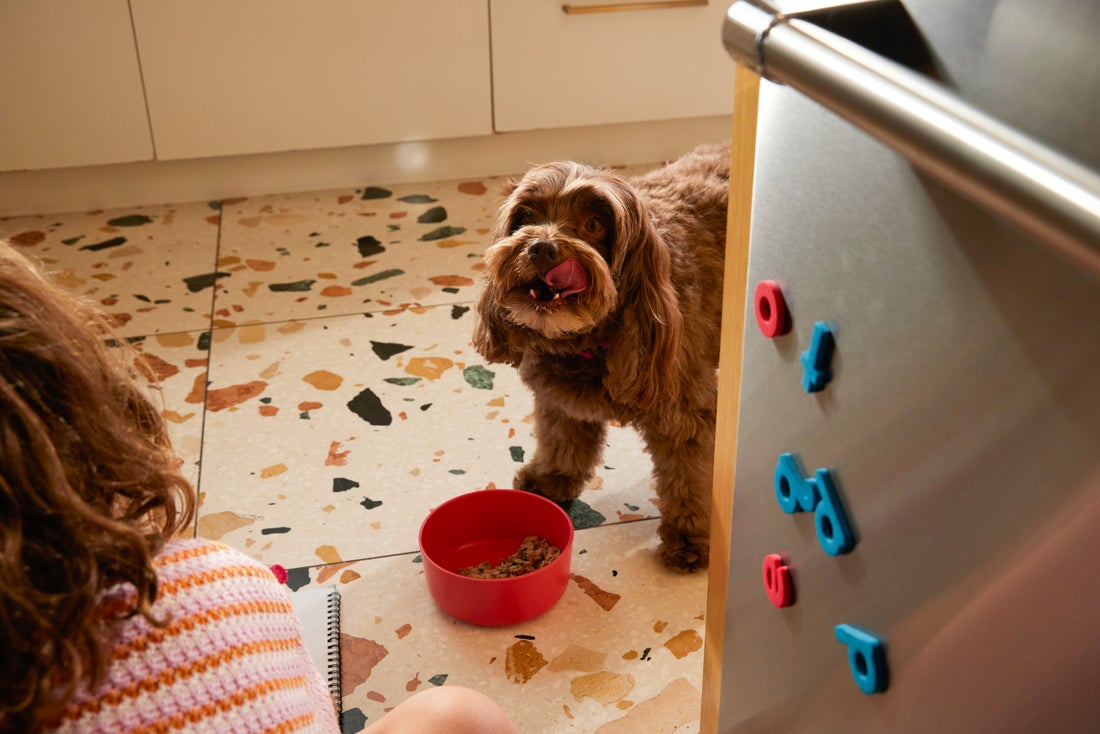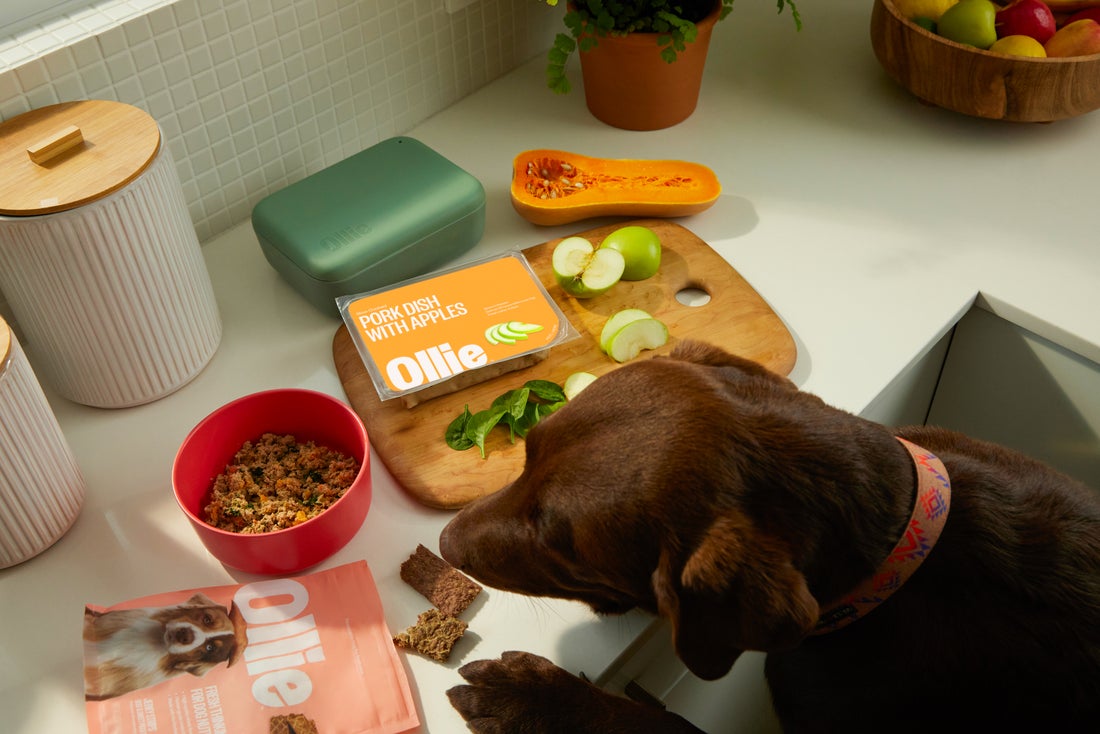Hey Ollie blog readers! We’re offering you an exclusive 60% OFF your starter box! Try now!
Last month, I took my pup Dottie to the vet for what I dubbed her “big girl procedure.” My baby was getting spayed. Of course, she pranced into the waiting room like her usual social butterfly self: tail wagging, kissing every last technician and stranger, completely oblivious to the days of recovery ahead. I, on the other hand, was a nervous wreck. And though my vet reassured me that it was a standard procedure, I still felt unprepared for the aftermath.
There’s a lot of conflicting information out there about when a dog should be spayed or neutered, if it’s even necessary, and how they should be cared for in recovery. But the one thing we can all agree on? It’s a major milestone for any pup, and something that all parents should approach feeling prepared. Here are the four things that I wish I had known before my puppy got spayed:
1. Every pup recovers at a different pace.
When I brought Dottie home from her spay, she was exhausted for days. I couldn’t believe it! Almost every pet parent I had consulted said their pup was feeling better by day two, but my sweet girl was fully zonked for the first three days—at least.
Most vets will tell you to expect your pup to be “out of commission” for the first 10 to 14 days, but it’s harder to predict when they will turn a corner in their recovery. “Some dogs bounce out of here the same day like nothing ever happened,” said Dr. Judy Morgan, a holistic veterinarian based in New Jersey. “Others act painful and won’t eat for a day or two.”
So, while there’s no way of knowing exactly how your pup will react to their spay or neuter until the day of surgery, here are some of the red flags that warrant a call to your vet:
- If your pup loses an appetite for their favorite food
- If your pup is vomiting, having diarrhea or dark, tarry stools
- If your pup has pale gums, which could indicate anemia or internal bleeding
- If there is bleeding, discharge, or inflammation at the incision site
- If your pup has difficulty breathing or severe discomfort
2. Some pups will regress or act out during recovery.
Here’s one thing that I wasn’t warned about before bringing my girl home: incontinence. Even though Dottie had been fully house-trained for months, she lacked the energy to go to the bathroom outside, which led to a couple of accidents on day one. This is something I learned the hard way. She fell into a deep slumber on my bed, and much to my surprise, I returned to the faint smell of urine soaking through my comforter and bed linens. Yuck.
I was even more surprised to learn that this behavior is not uncommon for dogs after surgery, particularly for the ladies: “Incontinence can happen in some dogs immediately after spay, but should resolve within a week,” said Morgan. “Usually, it’s due to pressure applied to the bladder when handling tissue during surgery.” To avoid unwanted accidents, the best thing that you can do is set up a recovery zone for your pup. Make sure their space is comfortable with blankets, towels or potty pads, and soft toys.
While some dogs struggle with bladder control, others can become mildly aggressive after surgery—even snapping at their owners, particularly as anaesthesia wears off. (Just think how cranky and exhausted you would be after undergoing a major procedure.) It’s best to keep your dog isolated from other pets and family members during this time. Just remember that these behavioral changes are temporary!
3. The cone of shame is not your only option.
If there’s one thing that most pet owners know to expect after a spay or neuter surgery, it’s the infamous cone of shame. Also known as an “Elizabethan collar,” the plastic cones are widely used by vets and animal hospitals, as a cheap and effective method to prevent dogs from reaching their incisions and/or pulling out stitches.
In addition to making your pup look like a walking martini glass, the cone of shame is notorious for being uncomfortable and causing head-on collisions with walls and furniture. For that reason, some veterinary practices and pet owners have opted for cushier alternatives in recent years.
Some of the most popular options include the soft donut collars that resemble travel pillows and the playful recovery collars that add some levity and flair. At Morgan’s practice, she prefers these surgical bodysuits, which cover the problem area rather than restricting a pup’s ability to walk, sleep, and eat normally.
Morgan emphasizes the importance of pups wearing some form of suit or collar to protect against the two biggest risks of surgery: infection and dehiscence, which occurs when the intestines or other organs come through an opening in the body wall. Whatever you choose, make sure it’s worn overnight and whenever your pup is left unsupervised. And remember, a little discomfort and reduced mobility will be worth it, if it means preventing a more painful infection down the line.
4. Your pup will get real smelly, real fast.
If you and your pup are anything like me and mine, then bathtime is a constant (and most necessary) struggle. My general feeling is that if my pup is going to sleep in bed with me, her hygiene should reflect that.
So, when our vet placed a restriction on bathtime for the two weeks following surgery, I was mildly horrified. Of course, I understood that her sutures would need time to heal, but I worried about how this would impact our newly-established grooming routine.
My fears were actualized when I brought her home and learned that following a spay, it’s natural for some bloody discharge to appear around the vulva. That, combined with my inability to bathe her for the next two weeks, proved to be a smelly combination. (Note: If your pup has a yeasty or foul-smelling odor after surgery, it could be a sign of infection. When it doubt, ask your vet.)
My advice? Try to schedule a professional grooming appointment in the days prior to surgery. Ask for a full “sanitary trim” of the hair in their genital area, which can harbor bacteria when hair is left too long. If your pup has a fluffier coat, consider clipping it shorter than usual. This will help reduce matting during recovery, as you should avoid any excessive brushing that could pull at skin and open stitches. Nobody ever said they had too many grooming wipes on hand, either.
The Ollie blog is devoted to helping pet parents lead healthier lives with their pups. If you want to learn more about our fresh, human-grade food, check out MyOllie.com.
Tagged As:

The nutrition your dog needs,
the food they want.

Enjoying our articles? Subscribe our Newsletters and get new articles directly to your inbox
You might also like
18 July 2025
6 MINS READ
Can You Mix Fresh Dog Food With Kibble?
If you’re feeding your dog kibble but want to upgrade their bowl, you’re not alone. Many pet parents ask if they can mix fresh dog food with kibble to get some of the benefits of fresh food wi…
by Ollie Pets
18 July 2025
5 MINS READ
Does Fresh Dog Food Help With Weight Loss?
If you’ve noticed your dog carrying a few extra pounds, you’re not alone. According to the Association for Pet Obesity Prevention, over half of dogs in the U.S. are overweight or obese. Extra …
by Ollie Pets
18 July 2025
4 MINS READ
Is Fresh Dog Food Cooked or Raw?
When you hear “fresh dog food,” it’s normal to wonder if that means raw meat or something cooked. After all, fresh just means it’s not dry kibble or canned food packed with preservatives. …
by Ollie Pets








